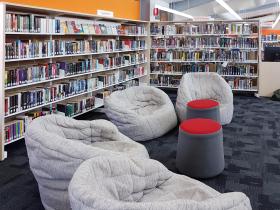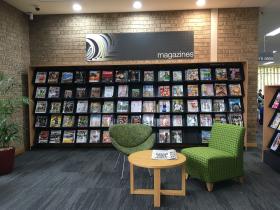Service area: Collections
Collection development, management, display and circulation remain significant business for public libraries.

In recent years there have been changes in the way people use collections and library spaces. This has not only influenced the content of collections but the way collections are presented. Together with electronic media and digital storage of collections, this has resulted in a decline in non-fiction borrowing and an increase in recreational collections. Some libraries have merged their reference collection into the non-fiction collection, changing a long-held tradition.
Most library services have strict policies of actively managing collections to keep them vibrant and relevant to their communities, weeding collections as needed. Many libraries are adopting techniques used by bookshops and other retailers – providing user friendly collections and engaging browsing environments.
Factors that affect the attractiveness of library collections include:
- organisation of the collection
- breaking up densely housed collections with seating, varied geometries and varied mood
- quality and attractiveness of shelving, shelf signage and shelf ends
- ability to display a range of differently proportioned items attractively and with ease
- density of collection (too many books can be overwhelming, and face out books tend to be borrowed more)
- theming of subjects by creating physical ‘rooms’ for specific subjects, frequently achieved with signage and interior design
- arrangements of shelves and relationship with surrounding furniture and architecture.
Organisation of collections
The organisation of library collections affects the ease with which library users can find material.

User friendly organisation includes:
Popular subjects
Adding extra signage to the existing Dewey classification to indicate popular subjects. Signage can take the form of shelf signage, banners and tabs interfiled with books – e.g. 710–719 might be labelled as ‘Landscaping’ , followed by 720–729 ‘Architecture’.
Co-locating subjects
Co-locating similar lifestyle topics using a discontinuous Dewey system e.g. the ‘Family’ collection might have: 610–619 ‘Health’, then 649 ‘Parenting and Childcare’, omitting the unrelated Dewey numbers in between.
At least one library has developed a system where the items in each lifestyle topic are colour-coded using the Dewey label on the spine – pink for the ‘Family’ collection, for instance. Not only does this method make it easy for library staff to see if books are out of place at a glance, it also assists users with wayfinding.
Specialist collections
Providing specialist collections for popular subjects, including: graphic novels, gardening and cooking, artworks, romantic novels, music, AV etc. Specialist collections can also influence the design of the space in which they are housed.
Integrated collections
Current library design must address the issues of integrating traditional and digital forms of knowledge collection and dissemination, creating a ‘hybrid library’. The hybrid library comprises information being presented to users in an easily discoverable, integrated way regardless of format.
Establishing your collection size
When establishing collection size:
- recent acquisition costs per item will translate this information into a budget item for your library development project
- establish specialist genre and community language provisions
- if there is a preference for more ‘face out’ display a larger Base Area factor will need to be allowed or, alternatively, more area provided for display.
Living Learning Libraries has further information for planning library collections.